What Luca Guadagnino’s Cannibal Love Story ‘Bones And All’ Taught Him About His Own Drive To Make Movies – Venice Q&A
- Oops!Something went wrong.Please try again later.
- Oops!Something went wrong.Please try again later.
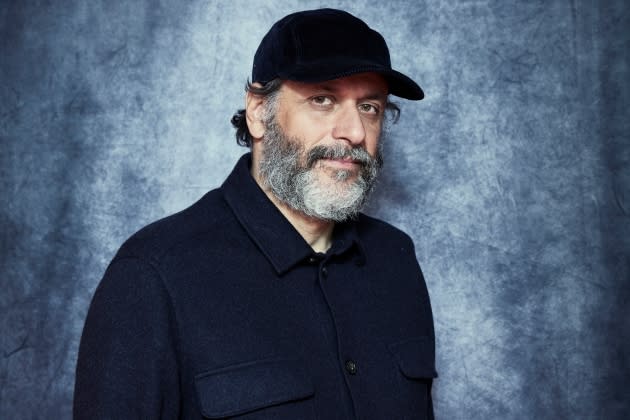
Luca Guadagnino has only just moved into the historic house in Piedmont, Italy that he bought some four years ago. What he hoped would be a pain-free renovation project was compounded by issues with the foundation that prolonged the work. And while he’s satisfied with the fit and finish, all meticulously directed by him (Guadagnino has his own interior design firm), it is still bare of furniture, there’s no internet, and cellphone service is only possible from one spot on the terrace… in a favorable wind. Upstairs, a stunning home theater has been fully kitted-out save for the HDMI cables required to pass a picture through the projector, and most of his DVDs and Blu-rays have yet to be unpacked, but he has wasted no time in setting up an editing suite in which he is making much swifter progress on Challengers, a film starring Zendaya and Josh O’Connor that the rest of us won’t see for another year.
As Deadline visits him on his 51st birthday in early August, Guadagnino is primed instead to discuss Bones and All, the new feature that reunites him with Call Me by Your Name star Timothée Chalamet and marks his first collaboration with Waves breakout Taylor Russell. Based on the book by Camille DeAngelis and adapted by David Kajganich, with whom Guadagnino collaborated on A Bigger Splash and Suspiria, the film tells the story of Maren and Lee, two unlikely companions who unite in America’s Midwest in the 1980s after Maren is abandoned by her father (André Holland). As they make their way across the country, their shared compulsion to feast on human flesh and their struggle to reconcile the immorality of their desire forces them into society’s margins, destined to deal with the consequences of their true selves for the rest of their lives. Along the way, they meet others who share this peculiarly macabre trait, and who have found varying degrees of success living with it, allowing Guadagnino to round out his cast with colorful characters from Mark Rylance, Michael Stuhlbarg, Chloë Sevigny, and David Gordon Green.
More from Deadline
Luca GuadagninoI like to think that to love someone is to find the practice of the possible in the impossible. But for these characters, it’s really a double task, and very complicated.
If setting up a home has been a long process for Guadagnino, it hasn’t interrupted his work as a filmmaker. Bones and All will premiere at the Venice Film Festival next week only a couple of years after his feature documentary Salvatore: Shoemaker of Dreams first launched there (both release in U.S. theaters in November) and two more years since Suspiria took its bow in 2018. In between, in 2020, Guadagnino went to television with his first limited series, We Are Who We Are, for which he directed all eight episodes.
In the year since he celebrated his milestone 50th, Guadagnino says, he has been reflecting on the common themes that drive his passion to make movies. In a wide-ranging, hour-long first conversation about Bones and All and his body of work, the filmmaker expounds on his passion for the art form, the morality of cinema, and his inescapable need to turn over fresh stones with each new project.
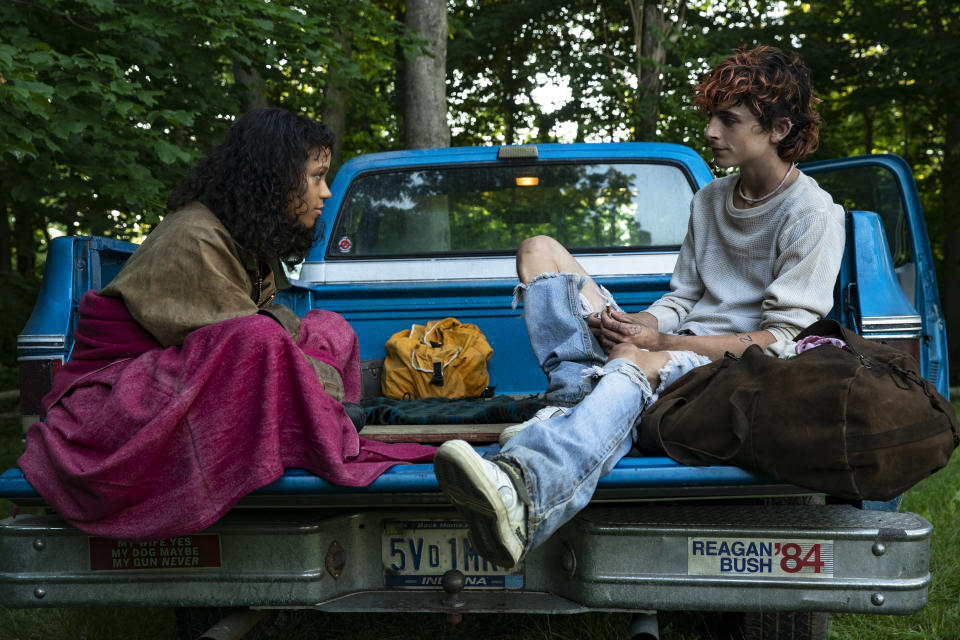
MGM
DEADLINE: How did you find this story?
LUCA GUADAGNINO: It was in 2020 when I was asked to be the president of the jury at the San Sebastián Film Festival. I was very happy and satisfied with my jury duties there. I was traveling back from San Sebastián to Milan when I got a call from Dave Kajganich. He’s a good friend of mine and I worked with him on A Bigger Splash and Suspiria. I hadn’t read the script he was working on for Bones and All, but he told me it was in turnaround because the director who was attached decided not to move forward with it. So, Dave asked me if I’d take a look, and I said, “I would love to read anything you write, but at this moment in my life I have so many projects that I don’t want to add another on top of it and become this flimsy person attached to everything.” I passed on the grounds of me being too busy, and us being too close as friends for me to leave him hanging.
But he insisted, and my motto is: If someone asks you something more than once, you should say yes. I truly believe that. So, I said I’d read it, at least for the pleasure of reading something he wrote because he’s such a wonderful writer. And once I started reading, not only was it as excellently written as I had predicted, but the characters he built into the script were powerfully touching to me and resonated in a very deep and intimate way, given that I didn’t know the novel and hadn’t developed the project.
I was asking myself why I was so touched and connected to the story to the degree that it felt like I’d been working on it forever with Dave. Dave and I are very much in sync on many, many things, and so I recognize my pal in something he wrote for someone else. But at the same time—and it was something I only realized after I’d finished the film—in this story of moral struggle about identity and being an outcast, there is a sort of fil rouge that now I see retrospectively as something I’ve been consistently coming back to in my work.
DEADLINE: What do you mean by that? What did you learn?
GUADAGNINO: I try not to analyze my work like this, but once you turn 50, you have to think about your life. I realize that every character I’ve ever followed has been an underdog. Every character was an outcast in some way. Emma Recchi in I Am Love is an outcast; an alien to the family she’s living in and eventually she’s literally cast out—banned from the center of things she doesn’t want to belong to. Ralph Fiennes’ Harry, in A Bigger Splash, is a guy in a position that is both the weakest and the strongest at the same time. He wants something he cannot have, and that alienates him from the people around him. It’s the same in Call Me by Your Name, you have this idea of self that goes in a very intimate way toward the radical aspect of what desire means, and how that might not match with what is the average sense of desire. In Suspiria, it’s very simple; she comes from the outside into this institution.
In the original script for Bones and All, Timothée Chalamet’s character, Lee, doesn’t appear until page 45. Once Lee arrived in the script, it felt like a blast of joy, because the character was wonderful, but at the same time, and without even thinking about it rationally, I immediately saw Timothée in it.
So, by the time I was crossing the border between Spain and France, I had finished the script and I called Dave and said, “Dave, it’s amazing, I know how to make this movie, and I think there’s an amazing character for Timothée to play.” I hadn’t formulated in my mind who Maren would be yet, but I knew who I wanted for Lee. And so I said to Dave, “Despite all the things I have to do, I am eager to send this script to Timmy and see if he’s interested.” And if Timmy wanted to do it…
I’m old-fashioned. For me, the character and the actor must meet in your mind. And if the actor is a great actor and a great star, that’s what fulfills your desire to make the movie. Indirectly, that might be a lesson I learned from the masters I’ve been worshipping all my life, starting with my beloved Bernardo Bertolucci.
DEADLINE: How did Timothée respond?
GUADAGNINO: It was still full-steam pandemic. Timmy was in Rome, not trying to escape the pandemic, but to escape a sense of being on familiar ground. We met, and as always it was so profoundly inspiring to talk to him because he’s so clever and has such a specific point of view on things. He said to me, “I’d like to talk to you and Dave to see where this character should go,” and so a conversation started. That conversation made the character more mature and made the movie more mature in turn.
It was the end of September when I got the script. It was the beginning of November when the movie was greenlit. We took about a month to put together the cast and the budget, and then the rest was actually making the film.
DEADLINE: How did Lee evolve through those conversations?
GUADAGNINO: In the original script, Lee was a bit more boisterous. He was leading the way a little bit more, whereas Timothée felt there was a desperation in Lee and a sense of tragic impossibility that he is not necessarily the one rolling out the set of rules to live through the moral dilemma of being who they are. He felt he needed to be less certain, less assertive, and more doubtful and fragile. He’s bound to an impossibility, and so he didn’t want Lee to be a jock who was teaching this young girl the way.
There’s a double reckoning here. When they realize who they are—when they realize they’re bound to the nature of their desire, where they feel that they inevitably have to be cannibals, despite the fact that they don’t want to be cannibals. Lee has met himself in his own otherness. That’s the first reckoning. The second reckoning is when this realization—which is deeply dramatic and monstrous—is shared with someone else who is like you. When you meet someone that is just like you, that wrestles with the impossibility that you recognize in yourself, and your shared otherness doesn’t make companionship, but rather makes even more impossibility out of it.
But when he meets Maren, he also finds someone who reminds him to love and be loved. That’s where his cynicism collapses and where his hope rises. It’s a very difficult mix because there’s always the other impossibility. So, in a way, Lee knows there’s no way out, but he’s very happy and eager to go through the journey of self-discovery in the case of someone he loves and who loves him back.
In general, I like to think that to love someone is to find the practice of the possible in the impossible. But for these characters, it’s really a double task, and very complicated.
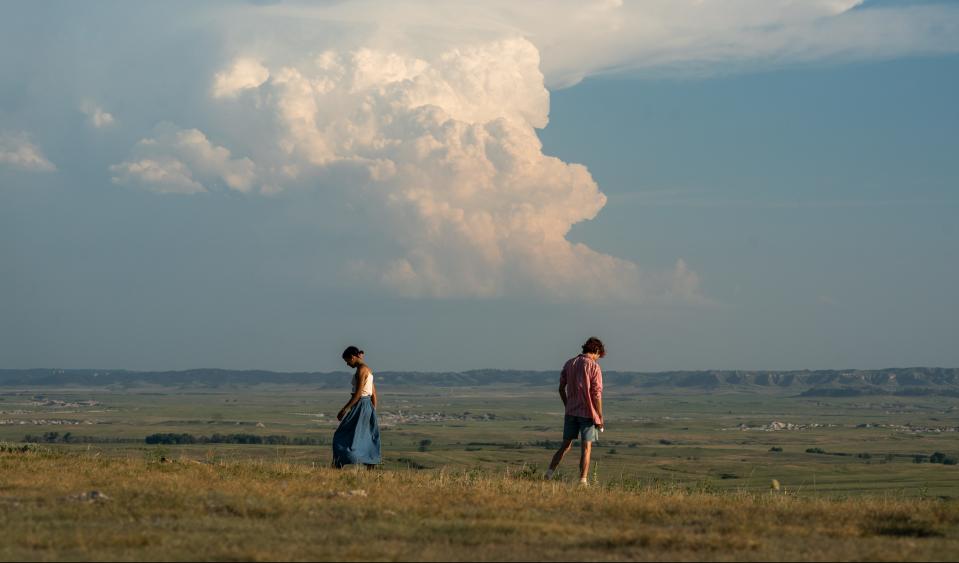
Yannis Drakoulidis
DEADLINE: You talked about finding common ground in your work. But the way you’ve explored this sense of otherness has been distinct each time. Are you purposefully seeking out new stones to turn over, even if they belong to the same garden?
GUADAGNINO: I think the thing that most excites me as a filmmaker and a director is the possibility of fully exploring the craft, and really playing with the set of tools you have in your hands within the language of cinema. The more conscious I become about cinema, through the way I work and through learning the formal language of cinema in its many, many layers, it’s something that’s truly amazing.
I respect so much the work of filmmakers who repeat their same movie over and over again. It’s actually reassuring and beautiful to see that. But at the same time, that’s not who I am and how I am. I like the idea of trying things, as you said, to turn different stones in the same garden. I don’t know if the garden is my garden, the garden of my imagery, or what the great historian of cinema Georges Sadoul said in his seminal Histoire générale du cinema, Tome 1, which is that cinema is about human beings because it’s about telling the story of human beings. That might sound parochial, banal, or old-fashioned, again, but I think he was right. Even the most experimental work of Pat O’Neill, which I adore, or the great experience of the underground cinema in the ’60s and ’70s, still reflects on that.
DEADLINE: Equally banal, perhaps, but that idea that the universal can be found in the specific is something mainstream cinema often neglects.
GUADAGNINO: Every-size-fits-all is Walmart. Every-size-fits-all is an artificial concept that belongs to the practices of capitalism, and the execution of a dull idea of capital. A smart idea of capital comes with the notion of prototype; it comes with the idea of finding new territory in order to expand even more.
The reiteration of something that has been set in stone and repeated and repeated over and over again is a bad practice because it’s pollution. It’s the pollution of imageries, of the world, and it makes the environment less livable, and thus less consumable. It’s a strange contradiction.
Billy Wilder said that show business is show business because without business it’d be show show, which from his perspective was the greatest sin of all. I’m not sure I’m totally in agreement with Mr. Wilder. Still, let’s hold on that, because this is Deadline Hollywood. But at the same time, you have to make prototypes because you have to re-create again and again the possibility of excitement in the investment of an audience toward something truly new.
Even Top Gun: Maverick, which is a movie that trades very deeply with nostalgia and repetition, comes with the novelty of happening 25 years later. The idea that a sequel comes after a quarter of a century is, in its way, a very smart, intelligent, and thoughtful way of doing business. Because now, even if the movie holds very deep nostalgia in the audience—the nostalgic gaze of Tony Scott and the idea of the world in the way it was in 1986—you are there for the ride of Tom Cruise’s Maverick being a man now, not a boy. So, I would say there are always ways to create something that is surprising and interesting.
DEADLINE: And yet, the industry revels in its love of data.
GUADAGNINO: Yes, but we’re not working on parameters that are set in stone, like chemistry or physics or mathematics. We are working with something that deals with the unconscious, and we have to allow that to be cunning. If we trade in the unconscious for the algorithm of it all—whether it’s the algorithm itself or the expectations that come from it—that is where you fail. “You can’t do that because our data tells us the audience wants this.” Well, that way you would never have had The Godfather. You would never have had GoodFellas. You’d never even have had Mission: Impossible, the first movie by Brian De Palma.
And by the way, that’s true of The Godfather: Part II, and Part III, which I love. It’s my favorite of the three. I’m using this platform to say it: it’s a masterpiece. I go back to the Godfathers over and over, but I go back to Part III every six months. I wish I could have done a movie like that; it’s beautiful. Coppola is a forger of prototypes. Even now, with Megalopolis. He’s not doing it in a cheap way, he’s making a big movie out of it.
DEADLINE: The question is whether the industry that allowed for films like The Godfather and Apocalypse Now still exists, or whether the data is too powerful now.
GUADAGNINO: Probably not as a system, in the way the system worked back then. But definitely, it exists as individual personalities finding their own ways into the business. We have to see what happens and how things morph, and not be too disheartened by the present because there are new ways to find and be excited about.
That’s what I say to young filmmakers when they ask me how to break into filmmaking: just do it. And don’t allow anybody to let you down or lecture you about what to do and how to do it. Just do it. A filmmaker has to be a very obsessive person who must refuse to let people f*ck with him, her, or them. It’s a director’s medium.
DEADLINE: You seem to find solace in building a band of collaborators. Your history with Tilda Swinton is well-documented.
GUADAGNINO: Yes, and I can’t wait to do another movie with Tilda as soon as possible.
DEADLINE: In Bones and All, you’ve reunited with Timothée and with Michael Stuhlbarg from Call Me by Your Name, and with Chloë Sevigny, who was in We Are Who We Are. There’s a lot of repetition behind the camera too. Do you feel the power of forming this troupe?
GUADAGNINO: In the beginning of Fanny and Alexander by Ingmar Bergman, in 15 minutes you can feel and understand and be a part of the way in which a group of artists that work with theater makes a family outside of the values of the bourgeoisie. And ever since I saw that movie in 1985, when I was about 14—and I was shocked by it—I said to myself, “I want to be like that group of people at the beginning of that movie.”
I do believe that if you are a filmmaker or a storyteller, you have to work with and around a group of people that are your family, and with whom you create ties that are very deeply familial. But it’s a very special family because it’s the family you choose. It’s a family that is there to challenge one another and surprise one another. To do endeavors together. It may not be about the generation of life, like a real family, but it’s the generation of life for imagery, and hopefully, you’re creating imagery that will stand the test of time.
Plus, the beautiful aspect of growing up is seeing your friends grow up. Gathering all together to bring the experiences that have been made with other families to cross over into your own, and inviting new people to the family.
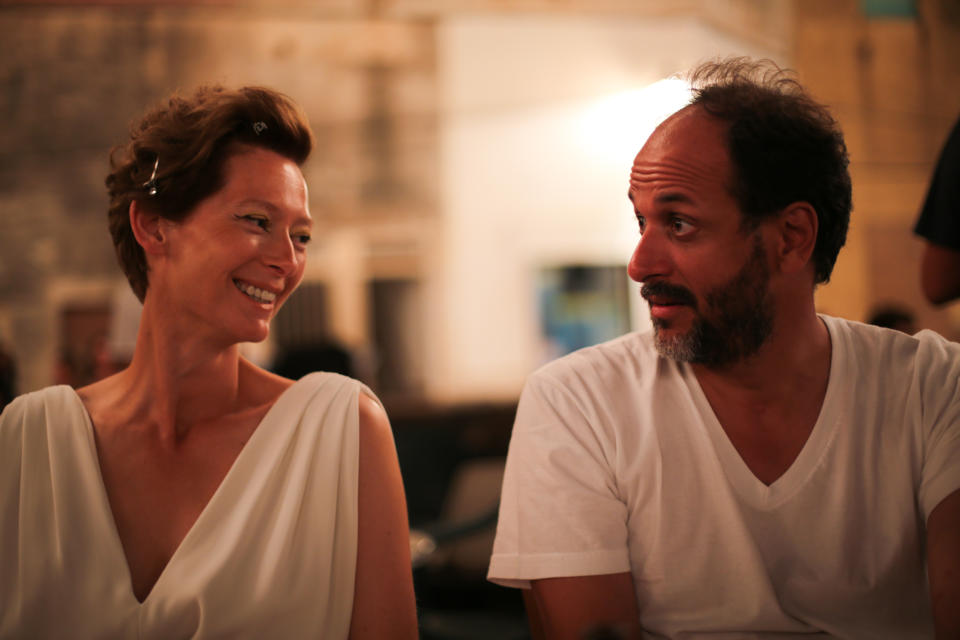
Searchlight Pictures
DEADLINE: Watching the film, it strikes me that Taylor Russell fits neatly into that family. That this won’t be your only collaboration. She had a fantastic breakout with Waves a couple of years ago. How did you find her?
GUADAGNINO: I’m in the same position, I saw her in Waves and I loved her in the movie. I went to see it because of Kelvin Harrison Jr., an actor I admire deeply. Taylor comes in later in the movie, and she takes over the lead. And the way you see Kelvin’s masterful performance seemingly become her performance—her movie—was so beautiful. I will never forget it.
Once I started to say that I was doing this movie, the image of her in Waves was almost immediately in my mind. It really was intuition. I asked her agent, Danie Streisand, to set up a Zoom, and we talked for a while. I might remember half an hour, maybe she’d tell you it was 10 minutes. I don’t know. But it was, for me, incredibly deep, and very beautiful and intense. Immediately I saw in this young woman the sparkle of self. I wasn’t immediately thinking about Maren—I was thinking of a partnership. I said to myself, “I think she should do it.” But then I waited a little while. Usually, I’m more insistent, but I called her again, maybe a week or two later, and said, “Listen, I’ve made up my mind, and if you want to play Maren, the role is yours.” That was it.
We all gathered in New York to do a screen test with makeup, hair and costume. It’s something I do all the time, and I do it very, very early on. We started to see the character, with Giulia Piersanti, the costume designer, and Massimo Gattabrusi and Fernanda Perez, the hair and makeup designers. All people that I’ve been working with for the last 30 years, more or less. And we basically found some codes for Maren, as Taylor was searching for Maren within herself. By the time we started shooting, Maren was there and she was very touching, but Taylor didn’t shy away from the hardness of the character, and the unpleasantness. It was quite striking.
DEADLINE: The movie is set in the ’80s, but it’s a very subtle ’80s. One of the things I couldn’t help but wonder about, for these characters, is what does the march of technology mean for their ability to exist on the margins? Is their life even possible when forensics and tracking and cellphones and the internet and all those things develop? There was a sense of melancholy throughout.
GUADAGNINO: I didn’t really think about that. When I went to the Midwest to do my scouting—which was really to get to know the area better—I saw a country that was hanging so desperately onto a set of values visually that was reflected in the pictures of the ’80s. So, in a way, even if the internet arrived and everything changed, I still believe America is bathing in a nostalgic sense of self that makes it the country that is the most forward-thinking and also the country that is the most frozen. That’s how I saw the ’80s in a way.
But I can see what you’re talking about in Mark Rylance’s character in the movie, for sure. You can see it in the way in which people are wounded by Sully, like the wonderful Jessica Harper showcases the wound of being someone who met these people. In a way, it’s a case for the impossibility of being and the impossibility of the transmission of knowledge within this world. In fact, this is a movie about escaping from your duty as a father, and escaping from your duty as a daughter. The nature of these eaters is such that those bonds are almost impossible. That’s why the purity of the bond between Maren and Lee is probably the most touching combination of people in any movie I’ve made because they are really trying to overcome that impossibility.
DEADLINE: Does that make you an optimist?
GUADAGNINO: It comes in waves. Generally, I’m an optimistic person, but life sometimes comes with a heavy toll. And depending on when you are doing the thing, and what happens to you around it, you might bring a slightly pessimistic perspective to the movie. For me, Bones and All was always meant to be a love story. I still believe that love has to be fulfilled. Maybe that’s optimism.
DEADLINE: Nevertheless, the nature of these eaters—these cannibals—is confronting. The nature of their secret, and what it might reflect in those of us watching, is confronting. Not aggressively so.
GUADAGNINO: Not aggressively, no. I think Suspiria was aggressively provocative. I think this one is much more serene in its sense of self. My true hope is that the audience doesn’t reject the movie as a provocation because it deals with a taboo like cannibalism.
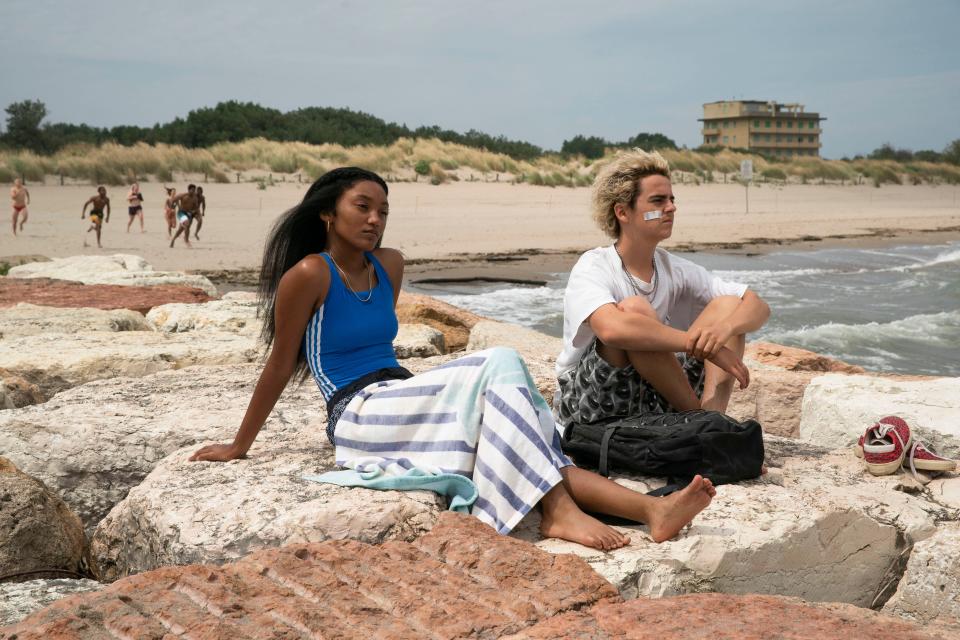
HBO
DEADLINE: Perhaps I’m too inured by genre cinema, but I was confronted, not provoked. I think there’s a difference. But what is provocation in art? Surely anything is valid.
GUADAGNINO: Possibly. But I think I was trying to be cautious with the representation of it. Someone who is very dear to me is developing a movie about a real-life story, but they’re going in their own direction by using the real-life case as a starting point to create imagery around. It sounded almost unfilmable to me because of its origins. There are times in which I would question myself if I would go there, maybe out of a respect for real life.
I still believe what Jacques Rivette said about Pontecorvo’s tracking shot in Kapo. The shot moves in towards the fence where the prisoner gets electrified, thus creating an emphasis with the shot. He said that using the tracking shot was a moral question. It was a famous, scandalous stance that Rivette took against Pontecorvo, and in that moment there was a real divide between the Nouvelle Vague and the rest of the world. But I do believe Rivette had really found a clue there.
DEADLINE: You think cinema can be immoral?
GUADAGNINO: Constantly. I can’t name films, but I have many, many movies in my mind right now. Even recently, I’ve been offended by a couple of movies that I found very immoral, and that were very celebrated for being thoughtful movies. It’s constant. When you go to do a jury at a film festival, you watch 23 movies in one week, and you struggle with that a lot. It’s like a free rein to narcissism, mixed with a very deep sense of entitlement.
With Bones and All, I wasn’t interested at all in the shock value, which I hate. I was interested in these people. I understood their moral struggle very deeply. I understood what was happening to them. I am not there to judge anybody. You can make a movie about cannibals if you’re there in the struggle with them, and you’re not codifying cannibalism as a topic or a tool for horror. The Texas Chainsaw Massacre is not a horror movie. It’s a devastating portrait of America from a very unreconciled master filmmaker. Even the second one, which I love as well, isn’t a horror movie; it’s a satire of Ronald Regan. The Exorcist is a family drama, not a horror movie. It’s about motherhood, and what is alien about that?
The horror movie as a genre is less interesting because it does play with the various limited set of rules, and the repetition of those rules can be funny and amusing if you want a mindless day with the popcorn at the movie theater watching Final Destination. Or, it can be an empowering experience, or that of a great intellectual who is reflecting on those codes, like Kubrick with The Shining. But mostly it’s just repetition. It’s like comfort food. Except comfort food is the food that makes you sick after you eat it because while it tastes fine at the beginning, it’s also heavy and processed.
I’m saying all this as a great horror movie fan, and, because of Suspiria and partially because of this movie, a director in the camp. I think I’ll keep doing horror movies in my life, even if Bones and All isn’t a horror movie per se.
DEADLINE: It’s fair to say people raised an eyebrow on social media when this project was announced, given that it reunited you with two of your Call Me by Your Name stars—Timothée Chalamet and Michael Stuhlbarg—and dealt with cannibalism as a theme. Earlier that same month, Armie Hammer had been accused on social media of expressing cannibalistic sexual fantasies, which resulted in him being dropped from projects and losing his industry representation. Did you anticipate that reaction?
GUADAGNINO: It didn’t dawn on me. I realized this afterward when I started to be told of some of these innuendos on social media.
This project—which was a popular book—had been in development for a number of years before Dave Kajganich brought it to me in 2020. I responded immediately to these characters who are disenfranchised and living on the edge of society. Any link with anything else exists only in the realm of social media, with which I do not engage. The relationship between this kind of digital muckraking and our wish to make this movie is non-existent and it should be met with a shrug. I would prefer to talk about what the film has to say, rather than things that have nothing to do with it.
It’s also a travesty towards the fundamental need for new attitudes to the ways in which we work together and deal with one another. Women have historically been put in a lesser position by patriarchal entitlement, and it’s important for that injustice to be addressed constructively so that it brings about real change. The muckraking of social media doesn’t address anything constructively, and the idea that this very profoundly important fight for equality can be misdirected in this way is something that frustrates me greatly. We mustn’t diminish that most important thing with this muckraking.
Best of Deadline
Venice Golden Lion Winners : Photos Of The Festival’s Top Films Through The Years
'Meet Cute' Photo Gallery: Kaley Cuoco And Pete Davidson Star In Comedy About Falling In Love
Sign up for Deadline's Newsletter. For the latest news, follow us on Facebook, Twitter, and Instagram.

